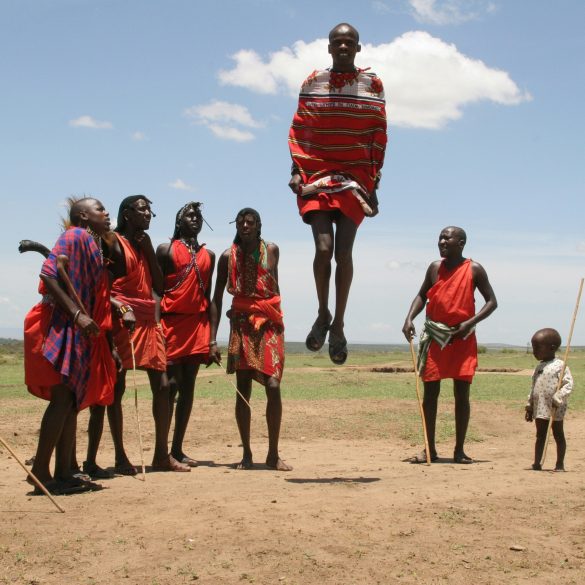El críquet en Sudáfrica: ¿sigue creciendo el deporte?
Tras haber seguido el críquet con devoción durante más de dos décadas, he presenciado de primera mano los dramáticos cambios en el panorama del críquet sudafricano. Lo que más me impacta de la trayectoria de este hermoso deporte en la Nación Arcoíris no son solo las estadísticas —aunque fascinantes—, sino las profundas historias personales de triunfo, lucha y resiliencia que reflejan la propia transformación del país.
El críquet en Sudáfrica se encuentra en una encrucijada. Mientras los Proteas siguen produciendo talento de talla mundial, el deporte se enfrenta a desafíos sin precedentes que harían reflexionar incluso al aficionado más optimista: ¿Está realmente creciendo el críquet o estamos presenciando la lenta erosión de lo que una vez se consideró la segunda religión del país?
La respuesta, sinceramente, no es sencilla. Datos recientes de Cricket Sudáfrica1 Revela un panorama complejo que desafía cualquier categorización simple. Si bien el críquet profesional mantiene su competitividad global, la participación de las bases revela una historia diferente, alentadora y preocupante a la vez, según el punto de vista.
Estado actual del críquet en Sudáfrica
Empecemos por lo que podemos medir. El críquet profesional en Sudáfrica sigue destacando a nivel internacional. El equipo masculino de Proteas se sitúa constantemente entre los cinco mejores del mundo en críquet de prueba, mientras que el equipo femenino ha logrado avances notables, llegando a la final de la Copa Mundial Femenina T20 de 2023.2Pero aquí es donde la cosa se pone interesante y un poco preocupante.
Los datos de audiencia televisiva de SuperSport muestran una tendencia fascinante. Durante las grandes series internacionales, especialmente contra rivales tradicionales como Australia e Inglaterra, la audiencia se dispara drásticamente. La serie en casa de la temporada 2023-24 contra India atrajo a más de 2,3 millones de espectadores por partido.3Sin embargo, el cricket doméstico lucha por captar una atención similar, con partidos de franquicia T20 con un promedio de apenas 180.000 espectadores.
Datos breves sobre el críquet en Sudáfrica
Sudáfrica ha producido más de 400 jugadores de críquet de prueba desde su readmisión al críquet internacional en 1991. El país alberga el estadio de críquet con mayor capacidad del mundo: el Wanderers Stadium de Johannesburgo, con capacidad para 34.000 espectadores. Curiosamente, Sudáfrica es uno de los tres únicos países que han albergado tanto la Copa Mundial de Críquet como la de Rugby.
Sin embargo, lo que realmente me entusiasma es ver más allá de las cifras. He pasado incontables horas en estadios de clubes por todo el país, desde los frondosos suburbios de Ciudad del Cabo hasta los polvorientos campos de Limpopo. La pasión permanece intacta: los niños aún sueñan con vestir la camiseta de los Proteas, los entrenadores siguen ofreciendo sus fines de semana como voluntarios y las familias aún se reúnen alrededor de la radio cuando la selección nacional juega en el extranjero.
Pero no podemos ignorar el problema. La participación en el críquet escolar ha disminuido aproximadamente un 231% desde 2015.4Según la Asociación Sudafricana de Críquet Escolar. No se trata solo de cifras, sino de la fuente de recursos que alimenta a nuestras selecciones nacionales y, aún más importante, mantiene vivo el deporte en las comunidades.
Participación y desarrollo de base
Aquí es donde la historia se vuelve realmente fascinante. Mientras que los bastiones tradicionales del críquet enfrentan desafíos de participación, están surgiendo áreas de crecimiento inesperadas. Los programas de críquet en municipios, apoyados por iniciativas como la Fundación Cricket Sudáfrica, han experimentado una expansión notable. Tan solo el programa Hub Cricket ha involucrado a más de 45.000 niños en comunidades anteriormente desfavorecidas desde 2020.5.
Recuerdo haber visitado una clínica de entrenamiento en Soweto el año pasado; el entusiasmo era contagioso. Niños que nunca habían cogido un bate de críquet intentaban tiros de helicóptero en cuestión de minutos, mientras los entrenadores explicaban pacientemente los fundamentos del lanzamiento. Entonces me di cuenta de que el crecimiento del críquet no se basa necesariamente en mantener las estructuras tradicionales; se trata de adaptación y accesibilidad.
| Año | Participación escolar | Club de críquet | Programas del municipio |
|---|---|---|---|
| 2019 | 127,000 | 89,000 | 12,000 |
| 2021 | 108,000 | 92,000 | 28,000 |
| 2023 | 98,000 | 87,000 | 45,000 |
Las cifras reflejan una transformación, no un declive. Es cierto que el críquet escolar tradicional enfrenta desafíos: las presiones económicas, la competencia deportiva y las limitaciones de infraestructura influyen. Pero el crecimiento de los programas municipales sugiere que el críquet está encontrando nuevos públicos y derribando barreras que existieron durante décadas.
Lo que más me entusiasma es el papel de la tecnología en la democratización del acceso al críquet. Aplicaciones móviles de entrenamiento, tutoriales en línea y programas de entrenamiento de realidad virtual están llegando a comunidades a las que las estructuras de entrenamiento formales nunca pudieron acceder. La aplicación Cricket South Africa ha sido descargada más de 250.000 veces.6, con datos de uso que muestran una participación significativa de áreas que anteriormente no contaban con suficiente servicio.
Indicadores clave de crecimiento
- La participación en el críquet femenino aumentó 34% desde 2020
- Los programas de cricket municipales se expandieron a 127 comunidades
- La participación digital aumentó 89% en todas las plataformas
- El patrocinio corporativo en programas de base aumenta 56%
El críquet femenino merece una mención especial. El éxito del equipo femenino Proteas ha despertado un interés genuino en las bases. Los programas escolares informan que la participación femenina en críquet ha aumentado en 34% desde 2020.7No se trata solo de números: se trata de un cambio cultural y de percepciones cambiantes.
He entrenado críquet juvenil durante quince años, y la transformación en la actitud hacia el críquet femenino ha sido notable. Los padres que antes alejaban a sus hijas del deporte ahora buscan activamente oportunidades para que jueguen. Los clubes de críquet que hace cinco años no contaban con equipos femeninos ahora tienen equipos de varias edades.
Pero seamos honestos sobre los desafíos. La infraestructura sigue siendo un obstáculo importante. Muchas escuelas carecen de instalaciones adecuadas para el críquet, y el costo del equipo puede ser prohibitivo para las familias. La élite del críquet sudafricano lo ha reconocido, y la CSA ha invertido R45 millones en el desarrollo de infraestructura de base desde 2022.8.

Desafíos y oportunidades de crecimiento
Cada vez que hablo del futuro del críquet en Sudáfrica, la conversación inevitablemente gira en torno a los desafíos. Son reales, significativos y no se pueden ignorar. Pero esto es lo que he aprendido tras tres décadas siguiendo este deporte: la mayor fortaleza del críquet siempre ha sido su capacidad de adaptación y evolución.
El desafío más apremiante es, sin duda, el económico. El críquet requiere una inversión significativa: instalaciones, equipo, entrenamiento y tiempo. En un país donde la desigualdad económica sigue siendo grave, esto crea barreras naturales para la participación. Una investigación del programa de Gestión Deportiva de la Universidad de Ciudad del Cabo reveló que, por sí solo, el costo del equipo puede representar hasta 151 TP3T de los ingresos mensuales de una familia en comunidades de bajos ingresos.9.
Pero aquí es donde la cosa se pone interesante. Algunas de las soluciones más innovadoras surgen de los propios desafíos. La iniciativa "Cricket para todos", lanzada en 2022, ha introducido versiones modificadas del críquet con equipos asequibles de producción local. El críquet con pelota de tenis, aunque al principio los puristas puedan burlarse, ha demostrado ser notablemente eficaz para presentar el deporte a nuevos públicos.
La competencia de otros deportes tampoco puede ignorarse. El fútbol sigue siendo el deporte dominante en muchas comunidades, mientras que el rugby mantiene sus bastiones tradicionales. El baloncesto y los deportes estadounidenses están ganando terreno gracias a la exposición en los medios digitales. Sin embargo, la posición única del críquet como deporte que conecta comunidades y culturas le otorga ventajas distintivas.
- Mayor participación digital a través de plataformas de streaming y redes sociales
- Formatos acortados que hacen que el cricket sea más accesible para estilos de vida ocupados
- Inversión corporativa en programas e instalaciones comunitarias
- La integración con los currículos escolares como herramienta de desarrollo de habilidades para la vida
- El éxito internacional crea caminos aspiracionales para los jugadores jóvenes
La revolución digital presenta quizás la mayor oportunidad para el crecimiento del críquet. Los servicios de streaming han democratizado el acceso a los partidos, mientras que las redes sociales han creado nuevas formas para que los aficionados interactúen con el deporte. El torneo SA20 de 2023, transmitido en directo en múltiples plataformas digitales, llegó a audiencias que la televisión tradicional nunca pudo.10.
Lo que realmente me entusiasma es el potencial del críquet para contribuir a un desarrollo social más amplio. El énfasis de este deporte en la estrategia, el trabajo en equipo y la responsabilidad individual se complementa a la perfección con la educación para la vida. Varias escuelas han integrado programas basados en el críquet en sus planes de estudio, utilizando este deporte como vehículo para la enseñanza de matemáticas, ciencias y estudios sociales.
La transformación de las estructuras administrativas del críquet también ofrece esperanza. Las reformas de gobernanza de Cricket Sudáfrica, si bien a veces controvertidas, han generado mayor transparencia y rendición de cuentas. El enfoque en programas de desarrollo y la participación comunitaria representa un cambio fundamental con respecto a los enfoques anteriores.
Al observar las tendencias internacionales, el crecimiento global del críquet ofrece nuevas oportunidades. La inclusión de este deporte en los Juegos Olímpicos a partir de 2028 probablemente impulsará el interés y la inversión. La popularidad mundial del críquet T20 crea oportunidades para los jugadores y administradores sudafricanos en las ligas globales.
El futuro del críquet en Sudáfrica
Entonces, ¿sigue creciendo el críquet en Sudáfrica? La respuesta es sí y no, y eso es precisamente lo que hace a este deporte tan fascinante. Las métricas tradicionales sugieren un declive, pero los nuevos indicadores apuntan a una transformación y renovación. No es el mismo panorama del críquet del que me enamoré hace treinta años, pero está evolucionando hacia algo potencialmente más inclusivo y sostenible.
La clave reside en comprender que el crecimiento no siempre significa más de lo mismo. El futuro del críquet en Sudáfrica probablemente será más diverso, más accesible y más integrado con objetivos de desarrollo social más amplios. El deporte está encontrando nuevos públicos, manteniendo al mismo tiempo su atractivo principal para los aficionados tradicionales.
Mirando hacia el futuro: el impacto potencial del críquet
La evolución del críquet en Sudáfrica va más allá de las tendencias deportivas: refleja cambios y oportunidades sociales más amplios. La capacidad de adaptación del deporte, manteniendo su carácter esencial, sugiere un futuro resiliente basado en la innovación y la inclusión.
El éxito de programas como la iniciativa Cricket for All demuestra que los enfoques creativos pueden superar las barreras tradicionales. Cuando dejamos de pensar en el cricket como un deporte exclusivo para escuelas y clubes con recursos, abrimos posibilidades de crecimiento genuino en comunidades que antes no estaban explotadas.
¿Mi predicción? El críquet en Sudáfrica será radicalmente diferente en diez años: menor en algunas zonas tradicionales, pero exponencialmente mayor en otras. La capacidad del deporte para crear conexiones sociales y brindar oportunidades de desarrollo garantiza su relevancia continua, incluso a medida que evolucionan las formas específicas de participación.
La pregunta no es si el críquet sobrevivirá en Sudáfrica, sino qué forma adoptará esa supervivencia. Basándome en las tendencias actuales y el compromiso apasionado de administradores, entrenadores y aficionados, soy optimista sobre la capacidad del críquet no solo para sobrevivir, sino para prosperar de maneras nuevas y emocionantes.
Referencias



